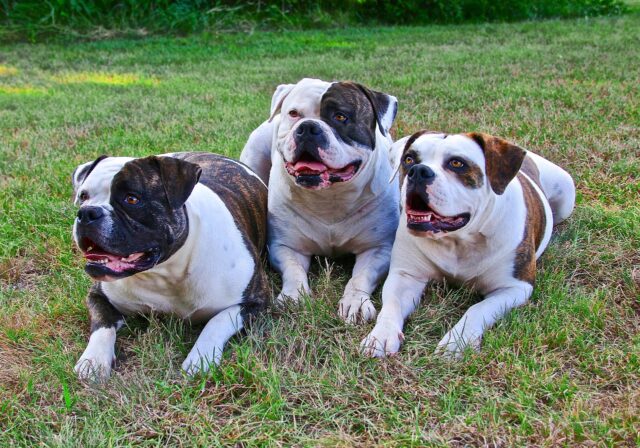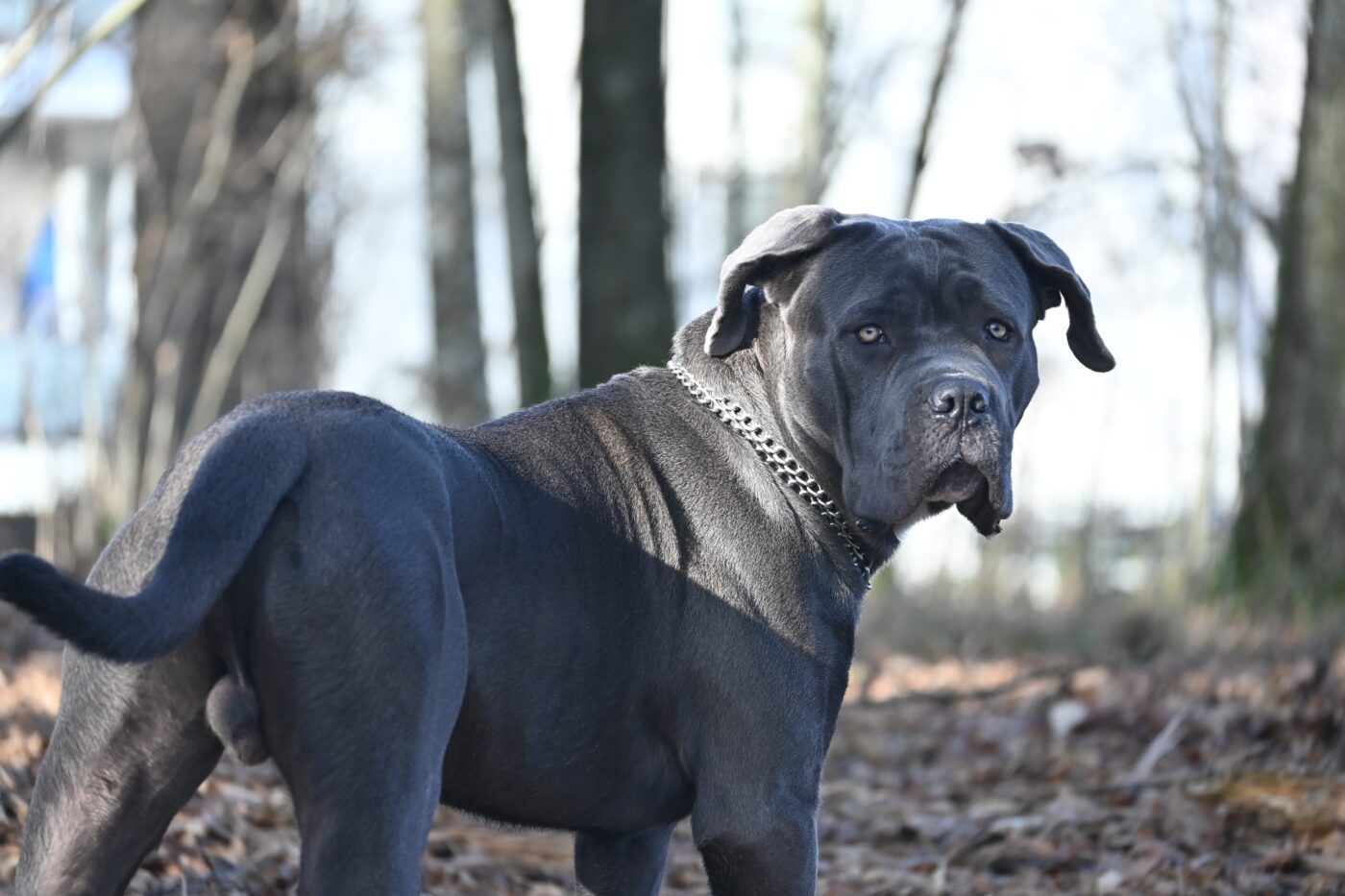The term “Pit Bull” often conjures up images of a muscular, strong-jawed dog with a powerful stance and short coat. However, the label is frequently misapplied to a variety of breeds that share some physical traits with the American Pit Bull Terrier but are genetically and behaviorally distinct. The misidentification of these breeds as Pit Bulls can lead to confusion, especially in areas where breed-specific legislation (BSL) is enforced. This article delves into six dog breeds commonly mistaken for Pit Bulls, highlighting their unique characteristics and explaining why they are often misidentified. Understanding these distinctions is crucial for dog owners, advocates, and policymakers to ensure fair treatment of all breeds.
6. American Bulldog
The American Bulldog is often mistaken for a Pit Bull due to its robust build, broad chest, and square-shaped head. Originally bred for farm work and guarding property, the American Bulldog is a strong, athletic breed with a protective nature. Their short coat and muscular frame closely resemble that of the American Pit Bull Terrier, especially when they are in peak physical condition. However, the American Bulldog is typically larger, standing taller and heavier than most Pit Bulls. Their temperament is also distinct; American Bulldogs are known for their loyalty and strong attachment to their families, making them excellent guardians. Despite their intimidating appearance, they are often gentle and affectionate, particularly with children. The combination of their physical similarity to Pit Bulls and their protective nature leads to frequent misidentification, especially in communities with strict breed-specific regulations.

5. Presa Canario
The Presa Canario, a powerful and imposing breed from the Canary Islands, is another dog often mistaken for a Pit Bull. With its large, muscular frame, broad head, and short coat, the Presa Canario shares several physical traits with the American Pit Bull Terrier, making it easy for the untrained eye to confuse the two. However, the Presa Canario is a distinct breed, originally developed for working livestock and guarding property. They are typically larger and more massive than Pit Bulls, with a height and weight that can exceed 100 pounds. The breed is known for its calm and confident demeanor, though it can be aloof and wary of strangers. The Presa Canario’s strong guarding instincts and formidable appearance contribute to its frequent misidentification as a Pit Bull, especially in areas with breed-specific laws or restrictions.

4. Cane Corso
The Cane Corso, an Italian Mastiff breed, is another dog often confused with Pit Bulls. This large, muscular dog was originally bred for guarding property and hunting big game, and it shares some physical characteristics with the Pit Bull, such as a strong build and a powerful jawline. However, the Cane Corso is typically much larger, with males often weighing between 90 and 120 pounds. Their coat is short and dense, and their overall appearance is more massive than that of a Pit Bull. The breed’s temperament is also different; Cane Corsos are known for their reserved nature and strong protective instincts, often forming close bonds with their families while remaining aloof with strangers. Despite these differences, the Cane Corso’s physical strength and imposing presence often lead to it being mistaken for a Pit Bull, particularly in regions where BSL is in place.

3. Staffordshire Bull Terrier
The Staffordshire Bull Terrier is perhaps one of the most commonly mistaken breeds for a Pit Bull. This breed shares a close genetic lineage with the American Pit Bull Terrier, which is why they have similar physical traits, such as a muscular build, broad head, and short coat. The Staffordshire Bull Terrier, or “Staffie” as it is affectionately known, is typically smaller than a Pit Bull, with a more compact and stocky frame. Despite their tough appearance, Staffies are known for their affectionate and loyal nature, often described as “nanny dogs” for their gentle disposition with children. The confusion between the two breeds is so common that many people assume a Staffie is a type of Pit Bull, particularly in areas with BSL. This misidentification can lead to challenges for Staffordshire Bull Terrier owners, especially when trying to navigate regulations meant for other breeds.

2. Dogo Argentino
The Dogo Argentino, a breed originally developed in Argentina for big game hunting, is another dog often mistaken for a Pit Bull. This large, muscular breed is known for its powerful build, strong jaw, and short white coat, which can closely resemble the appearance of a Pit Bull. However, the Dogo Argentino is typically larger, with males weighing between 80 and 100 pounds, and has a more athletic and agile frame. The breed is also known for its courageous and protective nature, making it an excellent guard dog and loyal companion. Despite its distinct origin and purpose, the Dogo Argentino’s physical similarities to Pit Bulls, particularly its strong build and confident demeanor, often lead to misidentification, especially in areas with breed-specific restrictions. This confusion can pose challenges for Dogo Argentino owners, as they may face unfair scrutiny or restrictions based on their dog’s appearance alone.

1. American Bully
The American Bully tops the list of breeds most commonly mistaken for a Pit Bull. This relatively new breed, developed in the United States during the 1980s and 1990s, was specifically bred to have the look of a Pit Bull but with a more exaggerated muscular build and a more distinct appearance. American Bullies come in various sizes, from Pocket to XL, but they all share a common ancestry with the American Pit Bull Terrier, which is why they are so frequently confused with Pit Bulls. Their broad chest, muscular frame, and square head give them a striking resemblance to Pit Bulls, especially to those unfamiliar with the nuances of the breeds. However, American Bullies were bred to have a more mellow and sociable temperament, often described as “gentle giants” despite their intimidating appearance. The breed’s strong resemblance to Pit Bulls, combined with its growing popularity, often leads to confusion and misidentification, particularly in regions with strict breed regulations.

In conclusion, while these six breeds share some physical characteristics with the American Pit Bull Terrier, they each have distinct genetic backgrounds, temperaments, and purposes. The common misidentification of these breeds as Pit Bulls highlights the importance of breed education and awareness, especially in areas with breed-specific legislation. Understanding the differences between these breeds can help dog owners, advocates, and policymakers make more informed decisions, ensuring fair treatment for all dogs regardless of their appearance.
 Toledo, United States.
Toledo, United States.